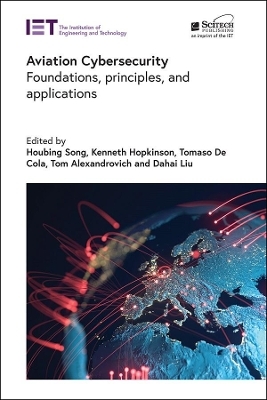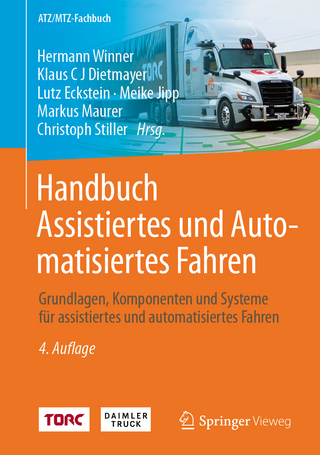
Aviation Cybersecurity
Institution of Engineering and Technology (Verlag)
978-1-83953-321-1 (ISBN)
Aircraft are becoming increasingly reliant on computing and networking technologies, with the advent of the Internet of Things, but this makes them vulnerable to cyber-attacks. This multidisciplinary book is at the cross section of aircraft systems, cybersecurity, and defence technologies. It covers the very latest in defending military and commercial aircraft against cyber-attacks.
The interdisciplinary nature of aviation cybersecurity and its wide-ranging impact in various arenas require contributions of expertise from multiple disciplines to collaborate in identifying the most feasible ways forward. This book provides an understanding of the key technical, social and legal issues in aviation cybersecurity, explains the range of technical challenges involved, and proposes innovative solutions.
Aviation Cybersecurity: Foundations, principles, and applications is a valuable resource for aviation and cybersecurity researchers and professionals in academia, industry, and military organisations.
Houbing Song is the Director of the Security and Optimization for Networked Globe Laboratory (SONG Lab, http://songlab.us/) and an assistant professor of Electrical Engineering and Computer Science at the Embry-Riddle Aeronautical University, FL, USA. He is the editor of eight books, the author of more than 100 articles, and the inventor of two patents. His research interests include cyber-physical systems/internet of things, cybersecurity and privacy, edge computing, AI/machine learning, big data analytics, unmanned aircraft systems, connected vehicle, smart and connected health, and wireless communications and networking. Kenneth Hopkinson is a professor and head of the Department of Electrical and Computer Engineering at the Air Force Institute of Technology, OH, USA. He is a senior member of the IEEE and ACM professional societies. His research interests include networking, security, cryptography, remote sensing, sensor fusion, critical infrastructure protection, and space applications. Tomaso De Cola is a group leader at the German Aerospace Center (DLR), Institute of Communications and Navigation. He is co-author of more than 100 papers. His main research activity concerns: TCP/IP protocols, satellite networks, transport protocols for wireless links, interplanetary networks as well as delay tolerant networks. He is a member of the IEEE Communications Society, where he has served as chair of the Satellite and Space Communications (SSC) technical Committee (TC). He is also serving as associate editor for many IEEE journals and magazines. He is also appointed as area director of the Space Internetworking Services within the Consultative Commmittee for Space Data Systems (CCSDS). Tom Alexandrovich is head of the Aviation Guidance Department at the Israeli National Cyber Directorate. The Cyber Unit at the Office of Israel's State Attorney is a new national unit, which was established in 2015, in view of the need recognized to coordinate efforts in dealing with crime and terrorism in cyberspace. Dahai Liu is a professor of School of Graduate Studies at the College of Aviation at Embry-Riddle Aeronautical University, FL, USA. He has authored over 100 articles and a book. He is a referee for many journals and a member of the Institute of Industrial Engineering. In 2019, he was awarded Researcher of The Year for the College of Aviation.
Chapter 1: Counter unmanned aerial vehicle for aviation security
Chapter 2: Formal verification of safety-critical software using SPARK
Chapter 3: Drone surveillance system - RF/WiFi-based drone detection, localization, and tracking: a survey
Chapter 4: Cybersecurity for the L-band Digital Aeronautical Communications System (LDACS)
Chapter 5: Using terrestrial ranging to monitor GNSS for targeted RF interference
Chapter 6: Security risk assessments and countermeasures for future aeronautical communication network architecture
Chapter 7: Physical layer security in wireless HetNets avionics and satellite communication systems
Chapter 8: Cybersecurity and privacy issues
Chapter 9: Workforce training and development in cybersecurity
Chapter 10: Aviation cybersecurity: a cyber-physical systems perspective
| Erscheinungsdatum | 02.02.2022 |
|---|---|
| Reihe/Serie | Radar, Sonar and Navigation |
| Verlagsort | Stevenage |
| Sprache | englisch |
| Maße | 156 x 234 mm |
| Themenwelt | Technik ► Fahrzeugbau / Schiffbau |
| Technik ► Luft- / Raumfahrttechnik | |
| ISBN-10 | 1-83953-321-8 / 1839533218 |
| ISBN-13 | 978-1-83953-321-1 / 9781839533211 |
| Zustand | Neuware |
| Haben Sie eine Frage zum Produkt? |
aus dem Bereich


